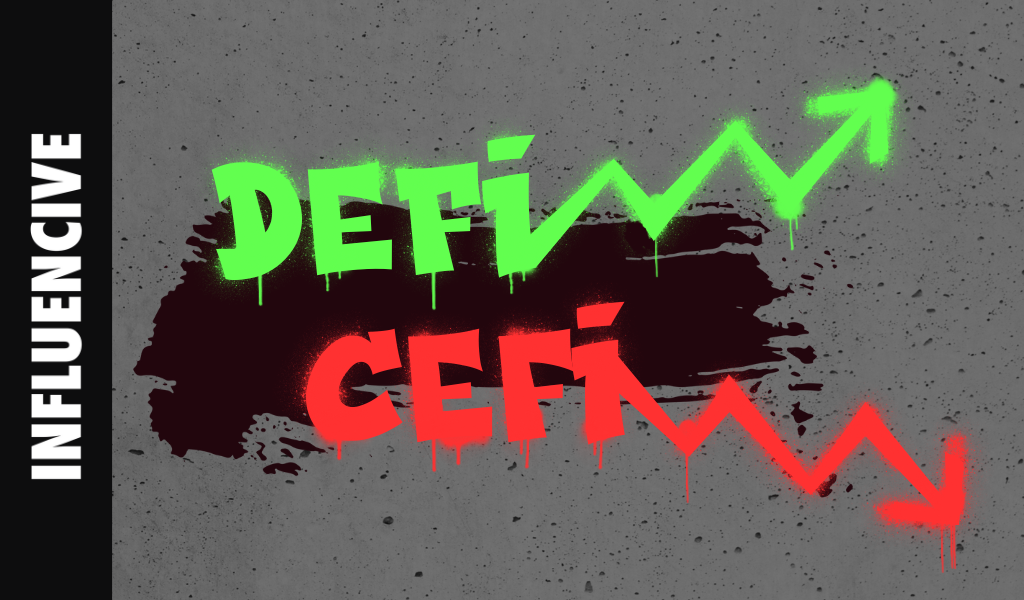2022 might be remembered as the beginning of the end for centralized exchanges (CEXs). Just in case you forgot, some of the biggest CEXs collapsed in 2022 including Three Arrows Capital, Voyager, Celsius, BlockFi, and of course we can’t forget FTX. These CEXs took with them massive amounts of capital from the overall crypto market. And their flaws also got exposed because users quickly realized that in many cases they actually transferred ownership of their tokens to the CEX (not cool). That meant the CEX could easily halt withdrawals which left thousands of users up a creek without a paddle. Combine this with the fact that users are usually required to do some type of KYC with CEXs, and it becomes clear why CoinGecko’s new study revealed that venture capital funding mooned for DeFi while funding for CeFi projects fell off a cliff. Let’s take a closer look at the numbers and try to figure out what that could signal for the future of DeFi and CeFi.
The Numbers
CoinGecko’s study discussed funding for all crypto sectors between 2018 and 2022. But for purposes of this discussion, we’ll be looking at changes in funding for DeFi and CeFi between 2021 and 2022.
In 2021, CeFi received $16.2B in funding and DeFi received $.9B. In 2022, CeFi received $4.3B in funding and DeFi received $2.7B. That means CeFi roughly experienced a 74% decline in funding while DeFi experienced roughly a 195% INCREASE. This is incredible when you consider that 2022 was a bear market and overall funding for the crypto industry fell by $13.6B. CoinGecko stated that DEXs and liquid staking protocols were some of the DeFi protocols receiving a lion’s share of the funding. We’ve discussed DEXs like Trader Joe and also liquid staking projects like Benqi before, and the additional funding could be seen as a major bullish indicator for projects like these in the next bull market.

The Future
The future of mass adoption for crypto looks like it will be driven by decentralized finance (DeFi). This is evidenced by the changes in funding mentioned previously and the collapse of so many CEXs in 2022. This could signal a trend where users increasingly choose to store and trade their assets on DeFi protocols due to their trustless nature, lack of KYC requirements, continuous innovation, and new partnerships. As more people become aware of these benefits, it’s likely that many more users will flock toward DeFi protocols instead of CeFi. And that could eventually lead to the death of traditional CEXs.
Final Thoughts
It’s increasingly looking like venture capital is beginning to shift away from CEXs and towards decentralized finance (DeFi). This is evidenced by CoinGecko’s recent study showing a 74% decline in venture capital funding for CeFi projects while funding for DeFi projects skyrocketed by 195%. This could be signaling an end of the old CEXs where users were required to submit KYC information and essentially relinquish ownership of their tokens. Instead, more people may flock toward trustless DeFi protocols that don’t require KYC, have innovative features, and allow users to maintain ownership of their assets. Only time will tell if this trend continues but it looks like venture capitalists are banking on it.
This is a Contributor Post. Opinions expressed here are opinions of the Contributor. Influencive does not endorse or review brands mentioned; does not and cannot investigate relationships with brands, products, and people mentioned and is up to the Contributor to disclose. Contributors, amongst other accounts and articles may be professional fee-based.

